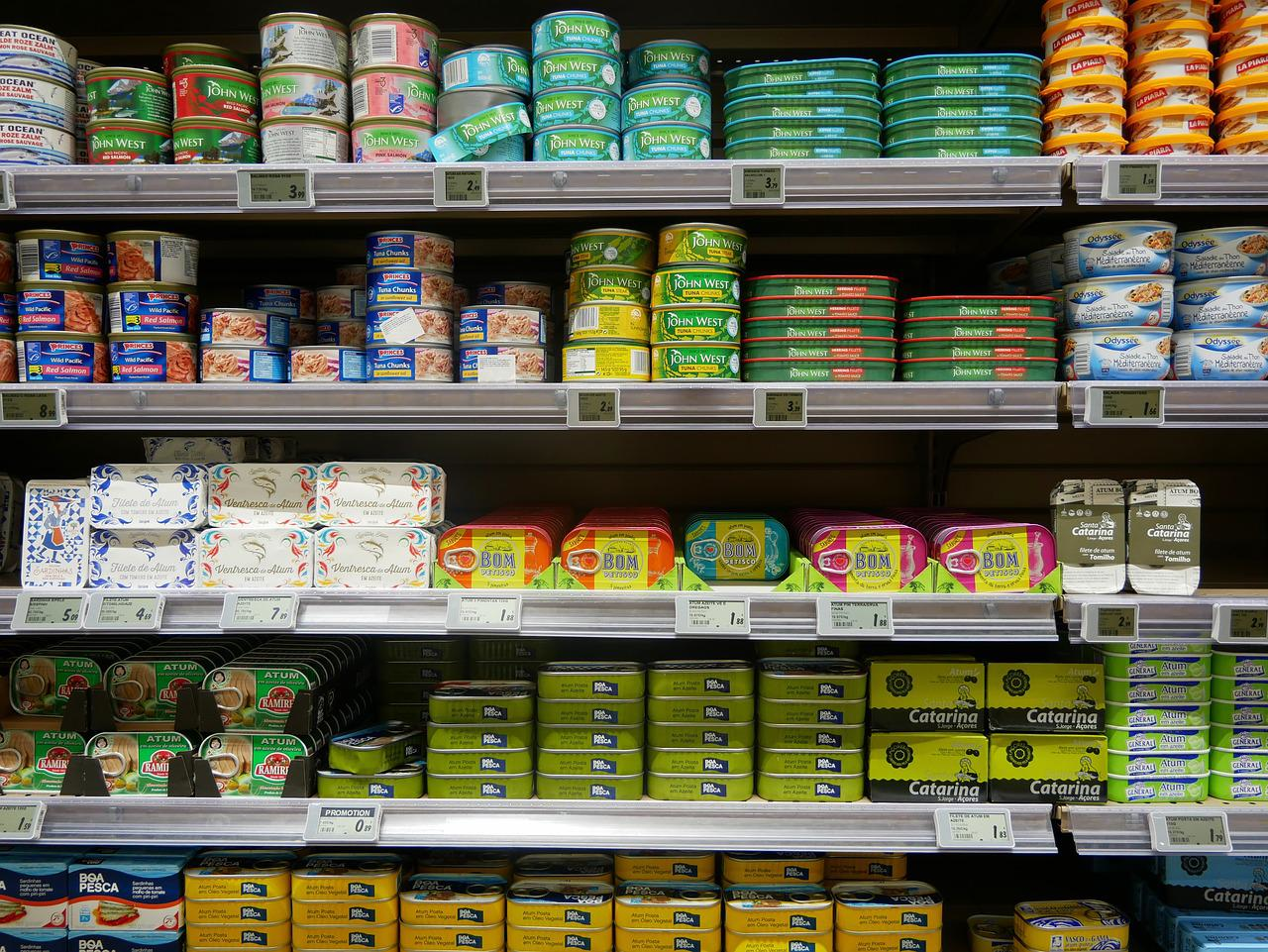By Gail Cole.
Though bare shelves have become a familiar sight during the pandemic, American supermarkets still offer an incredible array of choices when it comes to food. There are more than 100 commonly eaten breakfast cereals alone, and entire warehouse stores devoted to wine.
Many of us have preferences. One of my children eats chunky peanut butter while the other must have creamy. I only eat wild-caught canned fish and I never notice whether canned fish is minced or chunky, but the United States Customs and Border Protection sure does.
Every category of product that can be imported into the U.S., edible or otherwise, is described in the Harmonized Tariff Schedule of the United States (HTSUS) and assigned a Harmonized System (HS) code — a universal classification code used to distinguish products from one another. For example, a 100% cotton T-shirt has one HS code, a T-shirt that’s 50% cotton has another, and a T-shirt that’s 51% cotton still another.
The HTSUS isn’t a set list of products; identifying every product under the sun would be an impossible task. Rather, it categorizes millions of products that regularly cross international borders. The HTSUS is more than 4,300 pages, with 22 general sections, 99 chapters, though chapter 77 isn’t used. (The international HS includes over 1,200 headings grouped in 21 sections and 96 chapters.)
The importer of record is responsible for deciding which HS code is the best fit (i.e., classifying products property). It falls to Customs to monitor imports and enforce compliance. HS codes correspond to tariff rates, so a misclassified product may be subject to a higher or lower tariff than it should have.
Disputes sometimes arise. While it’s hard to argue that a 100% cotton T-shirt is anything but that, many products aren’t so easily classified. Given the variability of products and the enormity of the HTSUS, it’s easy to imagine an importer waffling between two or three codes before landing on one. All things being equal, you can see why an importer would opt for an HS code with a low tariff rate over an HS code with a high tariff rate. But of course, all things aren’t always equal.
This brings us back to canned fish.
Tariffs depend on how you cut and pack the fish
There’s a global company that imports two tuna salad products, one albacore, one chunk light. Both arrive in the U.S. as ready-to-eat pouches or lunch-to-go kits. The end products aren’t the same, but the production processes are substantially similar, at least for the purposes of HS classification.
Customs classifies both products under HTSUS subheading 1604.14.10. The article description for 1604 is “prepared or preserved fish; caviar and caviar substitutes prepared from fish eggs; fish, whole or in pieces but not minced.” 1604.14.10 further specifies “Tunas and skipjack: in airtight containers: in oil.” This has a general tariff rate of 35%. [Emphasis mine.]
The company protested Custom’s assessment, arguing that its products are not “not minced” and not “in oil.”
It claimed the products should be classified under 1604.20.05: “products containing meat of crustaceans, molluscs or other aquatic invertebrates; prepared meals.” This has a general tariff of 10%.*
Alternatively, the company proposed classification under 1604.14.22, which covers tuna that is “not minced” and “not in oil” and has a tariff rate of 6%. Or HS code 1604.14.30, which has a 12.5% tariff and broadly covers “other.”
You can’t blame them for trying, given the difference between a 35% tariff and a 12.5%, 10%, or 6% tariff. Yet Customs denied the protests. The case first landed at the Court of International Trade of the United States (CIT). What transpired there is described here.
Not minced or not not minced? Customs classified the prepared fish as “not minced.” The company says its products are not “not minced.”
The HTSUS doesn’t define the term “minced,” so the CIT first analyzed different factors to interpret its meaning.
To qualify as “minced,” the CIT decided, a product must be “small pieces of a minced cut [that] are the product of a purposeful process that involves cutting or chopping.” It determined the products in question were “not minced.” During preparation, the tuna is roughly chopped then hand-folded with additional ingredients. While this results in “some very small pieces and some chunks,” the CIT said the fact that “certain tuna pieces” were “equivalent in size to minced tuna … is purely incidental.”
In oil or not in oil? As for whether the products should be classified as “in oil” or “not in oil,” the company claimed oil must be added at “the packing stage” for tuna products to be classified “in oil” under HTSUS Chapter 16. It adds soybean oil to its products during the preparation stage, it explained, so the products should be classified as “not in oil.”
The CIT decided the products were properly classified as “in oil” because oil was added after the fish was cooked but before it was packed. It backed this interpretation by citing HTSUS Chapter 16 Additional U.S. Note 1, which reads, “For the purposes of this chapter, the term ‘in oil’ means packed in oil or fat, or in added oil or fat and other substances, whether such oil or fat was introduced at the time of packing or prior thereto.” [Emphasis mine.]
Ultimately, CIT determined Customs was correct in classifying the products under 1604.14.10, which has a 35% tariff. The company appealed.
Federal circuit court affirms judgment of the CIT
In the appeal opinion, the federal circuit court explained that “proper classification of goods under the HTSUS is a two-step process”:
- Ascertain the meaning of the specific terms in the tariff provision a. Rely on the “common and commercial meanings” of terms if necessary
- Determine whether the goods fall within the description of those terms
It agreed with the CIT’s interpretation of the term “minced” and that Customs properly classified the tuna salad products as “not minced.”
The federal circuit court also agreed with the CIT that the products were “in oil,” citing HTSUS Chapter 16 Additional U.S. Note 1: “For the purposes of this chapter, the term “in oil” means packed in oil or fat, or in added oil or fat and other substances, whether such oil or fat was introduced at the time of packing or prior thereto.” [Emphasis theirs.]
Getting HS codes right matters
Assigning HS codes to products can be an arduous task. There are millions of codes, and as noted above, more than one could apply to a product. Yet each product can only be assigned one HS code.
Customs checks that products are properly classified, and misclassified products can be held at the border. Otherwise, they can be allowed through and at some point the importer could be held liable for undercollected tariffs. That’s what happened in this scenario.
Companies that do business across borders benefit from getting HS codes right from the outset. Avarala Tariff Code Classification can help.
* When the goods in question were cleared, the general tariff rate for 1604.20.05 was 10%. The rate for 1604.20.05 then dropped to 7% and is today 5%, as noted in the HTSUS Revision 4 (2022).
=====
Gail Cole is a sales tax expert for Avalara with a penchant for digging through the depths of BOE sites and discovering and reporting rate changes across the country.
Thanks for reading CPA Practice Advisor!
Subscribe Already registered? Log In
Need more information? Read the FAQs
Tags: Sales Tax





